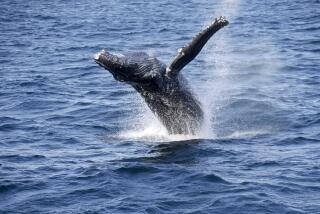Navy’s Research Finds New Sonar System Safe
- Share via
“White House Must Reject Navy’s Assault on the Oceans” (Commentary, Aug. 22) incorrectly suggests that no environmental analysis will be performed for the Navy’s Low-Frequency Active Sonar, a system developed to detect ultra-quiet ship-killer submarines at long distances.
The Navy has delayed deployment of this submarine detection technology for six years in order to conduct an environmental analysis, which included a two-year, $10-million research project conducted by scientists from Cornell University and the Woods Hole Oceanographic Institution, among others. Their findings helped establish that the LFA system can be used with appropriate mitigation measures and cause minimal impact to the environment.
It is also important to clarify the article’s mischaracterization of the circumstances involved in a March 2000 Bahamas whale stranding. An in-depth scientific analysis found that this stranding was caused by a confluence of factors, including environmental factors unique to that location as well as the concentrated use in confined littoral waters of several hull-mounted mid-range sonars that have been in use for decades.
During this fiscal year, the Department of the Navy will spend nearly $1.2 billion for environmental protection. In fact, the Navy is responsible for some of the most significant studies of marine mammals. We have worked closely with environmental professionals at the National Marine Fisheries Service to deploy crucial technologies like LFA under operating rules that will safeguard the environment and enhance national security.
Donald Schregardus
Deputy Asst. Secretary
of the Navy (Environment)
Washington, D.C.
More to Read
Sign up for Essential California
The most important California stories and recommendations in your inbox every morning.
You may occasionally receive promotional content from the Los Angeles Times.













